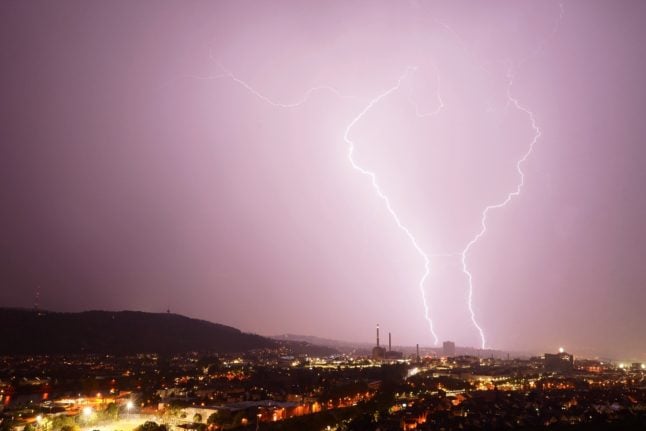April is usually the month most known for large temperature fluctuations and unpredictable conditions. Now, however, it seems that March may have taken this spot in Germany.
That’s because, while parts of the north of the country saw snow and ice over the weekend, on Monday, sunshine and Spring temperatures appeared in the south as temperatures shot up to the mid-teens. In the Upper Rhine, the mercury even rose as high as 21 C.
The temperature rose in many northern areas too on Monday, as Berlin reached 16 C and Hamburg 14 C.
According to climatologist Dr. Karsten Brandt of Donnerwetter.de, the current heat wave has come up from Spain “with a strong southwest current over France” to reach Germany.
READ ALSO: Current winter in Germany ‘2.7 C too warm’
However, Monday’s pleasant temperatures could be followed by some stormy weather on Tuesday, particularly in Bavaria and the coastal regions of the North Sea and the Baltic Sea.
Meteorologist Dominik Jung from wetter.net said that a “line of thunderstorms coming from France” could lead to heavy thunderstorms and that there is even an “increased risk of tornadoes”.
After the turbulent spell at the beginning of the week, Jung expects the temperatures to drop again and for wintry conditions to return.
“It starts all over again, the cold air masses stream into Germany, the whole thing is associated with really a lot of wind,” said Jung.
According to Guido Wolz of the German Weather Service, it’s not so unusual to experience a rapid change in weather in March. “Currently, the weather situation is quite lively. But we must not forget that we are in the middle of a westerly wind zone in Central Europe,” he said.
When do strong temperature differences in spring harm the natural world?
Wolfgang Kurtz, head of the DWD’s agrometeorological research centre in Freising, is not so concerned about the current, short-term temperature rises. “But if there are several days in a row at this time of year when such high-pressure conditions prevail, it can certainly disrupt the dormancy of vegetation – and give plants and insects the impetus to get going,” he said.
READ ALSO: More floods, droughts and heatwaves: How climate change will impact Germany
According to Kurtz, however, such sharp temperature fluctuations are not devastating until later in the spring, when, at around the end of April to mid-May, late frosts can severely damage crops by causing blossoms to die.




 Please whitelist us to continue reading.
Please whitelist us to continue reading.
Member comments